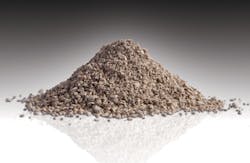How diatomaceous earth is handled in a process
The Lange twins, Randall and Brad, trace their family history back five generations. Their great-grandparents, Johann and Maria Lange, emigrated from Germany to Lodi, California, where they rented a little house with a few acres on which to grow watermelons.
As the family grew, so did its property, which expanded into a thriving vineyard from which grapes were harvested, crushed, fermented and filtered to produce wine. Today, Randall and Brad own and operate LangeTwins Winery & Vineyards (www.langetwins.com), located in Ocampo, California, a few miles north of Lodi.The Lange brothers have automated the winemaking process, especially the filtration step, to produce a full line of rich, robust wines ranging from table varietals to Single Barrel vintages. Only the finest grapes are fermented and filtered to produce wine varieties from Chardonnay and Zinfandel, to Merlot and their award winning Midnight Reserve.
Remarkable qualities
Once the grapes are crushed and fermented, filtration removes dead yeast and solids known as "lees," from the wine. Since some of these particles can be extremely small, diatomaceous earth is used as a filtration aid. Diatomaceous earth, also known as diatomite or kieselgur, is a naturally occurring, soft sedimentary rock that is easily crumbled into a fine, white to off-white powder.
Particle sizes range from less than 39.4µin (1µm) to more than 0.39 in. (1.0mm), but typically from 394µin (10µm) to 7,874µin (200µm). Consisting of fossilized remains of diatoms, a type of hard-shelled algae, it is very light and powdery due to its high porosity, which facilitates the generation of airborne dust when handled. Because of its absorbent qualities, it can also cause drying of the skin if handled without gloves.
Diatomaceous earth is added to the unfiltered wine in any of three 300-gallon holding tanks, and is then filtered out along with the fine particles of lees that adhere to it. LangeTwins Winery formerly purchased diatomaceous earth in 50 lb. bags, which were emptied manually into the holding tanks. Repetitive lifting of the bags, and the possibility of airborne dust from their dumping and disposal, posed potential safety risks.
To prevent these problems, while reducing material cost, the winery installed a bulk bag weigh batch discharger with integral flexible screw conveyor.
Moving the earth
The system includes a bulk bag discharger frame with adjustable extension posts to accommodate bags up to 4,000 lb. ranging in height from 36 to 84 inches. A forklift positions a removable-bag lifting frame with suspended bulk bag, onto a receiving cradle atop the discharger frame, and then attaches the bag spout to the hopper via a Spout-Lock clamp ring and Tele-Tube telescoping tube interface.
The Spout-Lock clamp ring makes a high-integrity, airtight connection to the bag spout, virtually eliminating airborne dust while the Tele-Tube telescoping tube maintains constant downward tension on the spout as the bag empties and elongates, promoting complete discharge from the bag. Concurrently, Flow-Flexer bag activators raise and lower the bag’s bottom edges into a steep "V" shape, directing material into the outlet spout.
The 9 cu. ft. capacity hopper has a mechanical agitator that promotes the flow of material into the inlet of the 25 ft. long, 4.5 in. diameter flexible screw conveyor, which is connected to the outlet port of the hopper using a U-shaped charging adapter.
The conveyor rises to a height of 14 ft. 7 in. at a 45-degree angle while the electric motor at the discharge end rotates a screw specially designed for this application, inside of a polymer outer tube. At the discharge end, diatomaceous earth gravity-feeds from the conveyor, through a 66 in. long, 6 in. diameter flexible downspout that the operator clamps, to the inlet port of the steel tank in use, allowing enclosed transfer of the potentially dusty powder.
The way to ‘batch complete’
Since the filtration takes place on an "as-needed" basis depending on the volume of wine being processed, the system provides the flexibility to program varying amounts of diatomaceous earth, accurately delivering the exact amount required for each batch. The entire bulk-bag discharger rests on load cells that transmit loss-of-weight information to a controller. It stops the conveyor once the preset batch weight has been discharged, and flashes "Batch Complete."
A "Low Weight" indicator flashes when the bag is nearly empty and needs changing.
Once the wine has been filtered, it is aged in wooden casks in preparation for bottling. The lees are spread out over the vineyards where they help the earth retain moisture.
"As a family and as a company, we are fully committed to the concept of sustainability," says Randall Lange. "Returning the filtered solids to the ground from where they originally came allows us to complete the cycle of nature."
